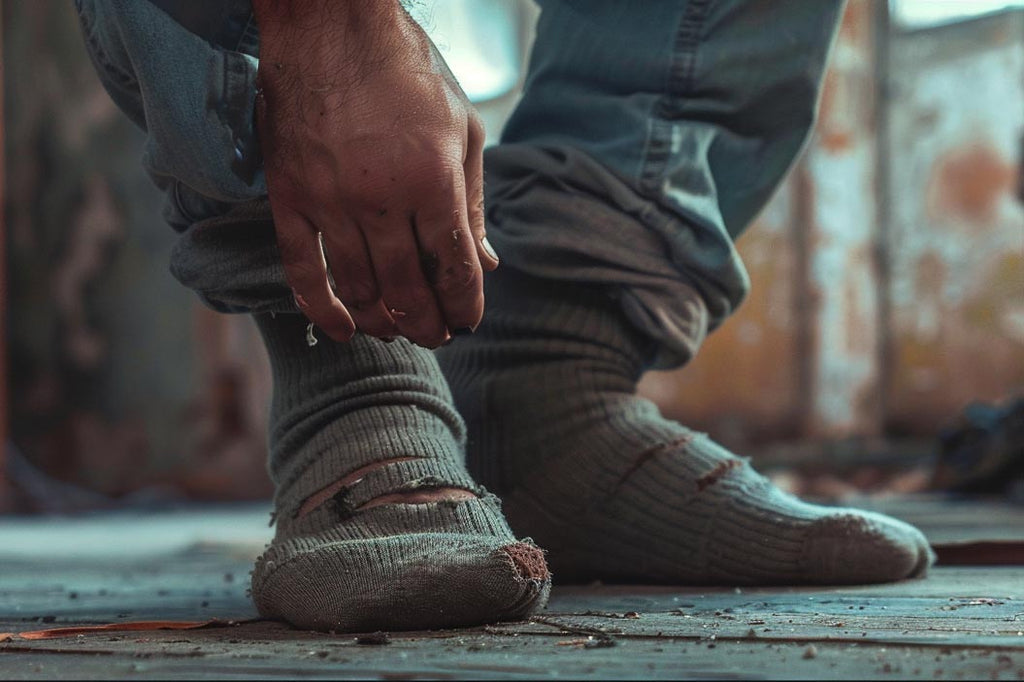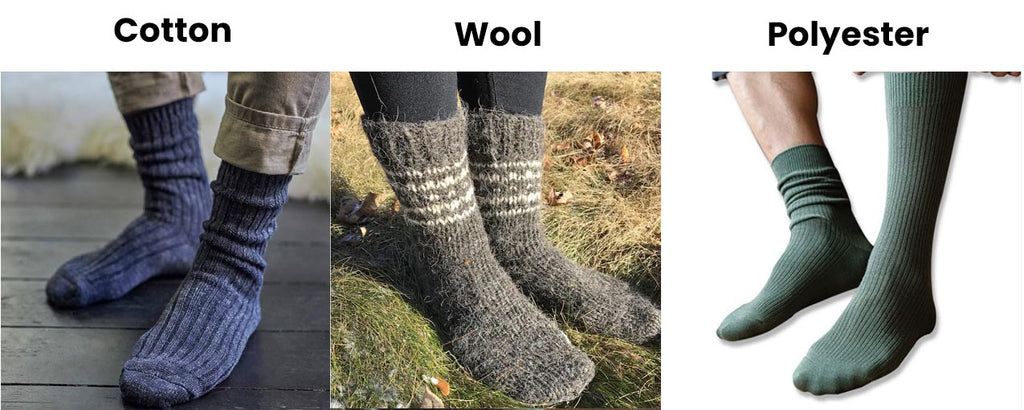Determining the appropriate time to purchase socks is often a matter of personal preference and necessity. Several factors influence the lifespan of socks, including the material quality, the frequency of use, and individual care habits. Typical cotton-blend socks might require replacement every six months to a year if worn regularly, mainly due to wear and tear from daily activities. Notably, signs that indicate the need for new socks include visible damage, such as holes and thinning fabric, as well as loss of elasticity, which results in socks that no longer stay up properly.
Additionally, personal comfort and hygiene play significant roles in deciding when to replace socks. Fading colours and stretched-out areas not only affect the sock's appearance but can also signal that the material integrity has been compromised over time. Moreover, socks that are subjected to heavy perspiration, especially in individuals prone to foot fungal infections or excessive sweating, may require more frequent changing to maintain foot health and comfort. Therefore, recognising these physical signs of deterioration can serve as a practical guideline for when to invest in new socks.
Importance of Sock Hygiene
Maintaining proper sock hygiene is critical for personal health and comfort. Wearing clean socks daily is a fundamental practice, as it can prevent the build-up of bacteria and fungi, which are common causes of foot odour and infections such as athlete's foot.
Frequency of Change:
- Daily: Socks should be changed at least once a day.
- Activity-based: After activities causing excessive sweating, a fresh pair should be worn.
Material Considerations:
- Cotton and wool are breathable materials that minimise odour.
- Synthetic materials might require more frequent changes due to less breathability.
Washing Precautions:
- Socks must be washed at a suitable temperature to kill bacteria.
- Detergent should be mild to maintain the sock's quality.
When to Discard:
- Holes: Significant wear compromises protection.
- Lost Elasticity: Socks that slide down can cause blisters.
- Thinning Fabric: Reduced cushioning affects foot comfort.
Good sock hygiene extends beyond everyday changes. It includes responsible purchasing habits, choosing materials that cater to individual needs, replacing socks regularly to prevent deterioration, and practising good foot care to ensure that socks remain an ally in maintaining not just foot health, but also overall wellbeing.

Signs of Wear and Tear
When socks exhibit clear indications of deterioration, it’s time to consider replacing them. Here's what one should look for:
Thinning Fabric
Over time, the fabric of socks can become thin due to repeated use and washing. Areas that experience the most friction, such as the heels and balls of the feet, are particularly prone to thinning. This reduced thickness can lead to discomfort and decrease the level of protection the socks provide.
Elasticity Loss
A key functional element of socks is their ability to stay up and fit snugly. Loss of elasticity means socks might slip down and bunch inside shoes, leading to potential blisters or uncomfortable walking experiences. Socks that frequently fall down are past their prime.
Holes and Stretching
Visible holes are the most obvious sign that socks need to be replaced. Likewise, excessive stretching might cause the socks to lose their original shape, making them ill-fitting. Both holes and stretching indicate that socks are unable to offer the support and coverage they are supposed to provide.
Determining Replacement Frequency
When considering the frequency with which one should purchase new socks, they must take into account their activity level, sweat production, and the material durability of the socks they use.
Activity Level
The more active a person is, the quicker their socks will wear out. For instance, a daily runner may find that their socks lose cushioning and develop holes faster than someone who wears socks primarily for casual activities. It is sensible for those with a high activity level to consider buying new socks every 3-6 months.
Sweat Production
Feet that sweat more heavily will contribute to the breakdown of sock fabric, thereby reducing the lifespan of the socks. Individuals with high sweat production may need to buy new socks more frequently to avoid issues such as bacterial growth or odours. In such cases, a replacement every 4-8 months could be warranted.
Material Durability
The longevity of socks varies significantly depending on the durability of the materials from which they are made. For instance:
- Cotton socks generally offer comfort but might wear out quicker than other materials.
- Wool blend socks are typically more durable and suited for a range of temperatures.
- Synthetic materials such as polyester or nylon often provide better elasticity and durability, potentially extending the replacement timespan to 6-12 months.
Sock Types and Longevity
Various types of socks offer different levels of durability, influenced by their material composition and intended use. The longevity of socks is contingent on these factors, encompassing wear frequency and care practices.
| Material | Features | Expected Lifespan |
|---|---|---|
| Cotton | Comfortable and breathable but less durable | 6 months to 1 year |
| Polyester | Resistant to moisture and more durable | 1 to 1.5 years |
| Wool | Warm, moisture-wicking, ideal for winter or outdoor use | 1 to 2 years |
| Synthetic blends | Balance of comfort and strength | Varies with blend |

Casual socks made from materials like cotton typically last six months to a year if worn regularly. Care, such as proper washing and avoiding harsh chemicals, can extend this lifespan.
Work socks and those used for strenuous activities such as running or hiking may exhibit more rapid wear and tear, necessitating replacement every three to five months. They often face rigorous conditions, and features like reinforced heels and toes can help withstand these demands.
Socks with lost elasticity or visible signs of wear like holes and thinning areas need replacing promptly to maintain foot health and comfort.
Choosing high-quality brands and caring for your socks by following washing instructions and rotating use can also extend their life, proving economical and sustainable in the long term.
Care and Maintenance
Proper care and maintenance extend the life of socks, ensuring they remain comfortable and hygienic. Following the correct washing, drying, and storage techniques can significantly affect how socks wear over time.
Washing Techniques
Socks should be washed after each wear to maintain hygiene. They ought to be turned inside out and washed in cold water to preserve their material integrity and prevent shrinkage. For the best care, one should use a gentle detergent, and consider placing socks in a mesh laundry bag to avoid stretching and snagging during the machine wash cycle.
- Temperature: Cold water
- Detergent: Mild
- Washing Method: Inside out, mesh laundry bag recommended
Drying Practices
After washing, socks should be air-dried flat and away from direct heat sources to avoid the material's warping or shrinking. Should one choose to use a tumble dryer, it's advisable to use a low heat setting. High heat can break down fibres, especially in socks that contain elastic or special moisture-wicking properties.
- Air-Dry: Flat, away from direct heat
- Tumble Dryer: Low heat setting
Rotation and Storage
Socks benefit from being rotated regularly to prevent overuse. One should sort socks by type and purpose when storing them, folding them gently instead of rolling, which can stretch out the elastic. Storing them in a designated drawer or container helps maintain their shape and quality.
- Rotation: Regular to prevent overuse
- Storage: Fold softly, store by type and purpose
Environmental Considerations
When considering how often to purchase new socks, one must take into account the environmental impact of production and disposal. Sustainable material choices and recycling practices can significantly reduce this impact.
Sustainable Materials
Socks made from sustainable materials such as upcycled cotton, recycled polyester, or other eco-friendly fibres minimise the environmental cost. For instance, the use of recycled plastic bottles to create socks not only reduces waste but also demands less energy when compared to producing new fibres. Brands like Girlfriend use these materials to offer a cosy fit while promoting a "Waste Not" mentality. They provide options that help maintain environmental stewardship without compromising on quality or comfort.
-
Examples of Sustainable Materials:
- Upcycled Cotton
- Recycled Polyester (RPET)
- Organic Wool
- Bamboo Fibres
Recycling and Disposal
Once socks reach the end of their life, their disposal should be considered just as carefully as their materials. Socks crafted from recyclable materials support the idea of a circular economy, where products are repurposed at the end of their lifecycle. Consumers should look for socks labelled as recyclable and be aware of brands that offer recycling programs. Proper disposal ensures that socks decompose appropriately or are repurposed, thereby reducing their footprint.
-
Key Points for Recycling and Disposal:
- Check if the brand offers a recycling program.
- Ensure socks are clean before recycling.
- Look for recyclable labels on packaging and products.



















